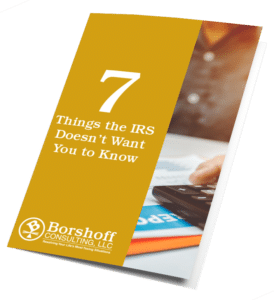If you are self-employed, you will probably need to file a tax return, pay self-employment and income tax on your annual tax return, and possibly even pay quarterly estimated taxes throughout the year. Paying taxes as a self-employed individual can get complicated, especially if you plan to take many deductions on your tax return.
This article will cover what self-employment tax is and how to calculate it. Plus, we’ll look at exactly who needs to pay self-employment tax and estimated quarterly taxes and when they are due. Finally, we’ll go over step-by-step instructions on how to pay taxes given the career choice to be self-employed.
What is self-employment tax?
Self-employment tax is a tax applied to self-employed individuals. Self-employed workers may be freelancers or those who have a side hustle, which accompanies their regular job. If you work for yourself you are probably going to be subject to self-employment tax.
This tax applies to net earnings. Net earnings are your business income less business expenses.
The rate of the tax is 15.3%. That amount is made up of Social Security and Medicare taxes. 12.4% is for Social Security tax, and 2.9% is for Medicare tax. The self-employment tax will be used when you complete your annual tax return.
Example of Self-Employment Tax
If you earn $40,000 as your self-employed business income less your business expenses, you will need to pay $6,120 ($40,000 X 15.3%). $4,960 ($40,000 X 12.4%) will go towards Social Security, and $1,160 ($40,000 X 2.9%) will go towards Medicare.
Don’t worry too much about the Social Security and Medicare amounts, because you just need to pay the self-employed tax of $6,120.
For more information on how to calculate your self-employment tax, see IRS Schedule SE: Self-Employment Tax.
Who needs to pay self-employment tax?
Who is considered to be self-employed?
According to the IRS, you are considered to be a self-employment individual if:
- You carry on a trade or business as a sole proprietor or an independent contractor.
- You are a member of a partnership that carries on a trade or business.
- You are otherwise in business for yourself (including a part-time business)
The Self-Employment Tax
Taxpayers who earn at least $400 in self-employment income will be required to pay self-employment tax.
So, how much do you need to save during the year for taxes? Dave Ramsey recommends saving 25% to 30% of your earnings to pay for self-employment and income taxes come tax season. This is a smart idea because you don’t want to end up with an unexpected tax bill after you complete your tax return.
Estimated Quarterly Taxes
If you expect to owe over $1,000 in taxes and are self-employed, you are required to pay estimated quarterly taxes. For more information on who needs to pay estimated quarterly estimated taxes, check out the IRS’s Estimated Taxes page.
What are the tax benefits for the self-employed?
There are many tax benefits for those who are self-employed. Some of the possible benefits available for you include the home office deduction, the health insurance deduction, a deduction for startup costs, and a deduction for vehicle expenses. Each deduction has specific limitations that apply before taking them on your tax return.
For more information on the benefits for the self-employed worker, check out this article or contact us today for a free consultation.
How do I pay self-employment tax?
Step One: Determine if you need to pay self-employment tax.
Ask yourself, “Will I make at least $400 in self-employed earnings during the tax year?” If you answered, “Yes!” you should expect to pay taxes come tax season, and as Dave Ramsey recommends, go ahead and save 25% to 30% of your net earnings throughout the year.
Remember, if you expect to owe at least $1,000 in taxes, you will need to pay estimated quarterly taxes.
According to U.S. News, if you are working for yourself and not an employer, you should expect to have to file a tax return in the next tax year. Uncle Sam wants his cut of your earnings, unfortunately. However, if you play your cards right and save appropriately, you should have plenty of cash available to pay the IRS.
Step Two: Consider hiring a tax professional to help you with your taxes.
If you realize you will need to file a tax return as a self-employed individual and/or need to pay quarterly taxes, it’s a good idea to hire a tax professional to help you file and pay your taxes. Your tax situation is complex, and a tax accountant can help you get the most out of tax deductions and other benefits on your tax return.
A tax professional can not only help you with your complicated tax return, but he or she can also help you with paying estimated quarterly taxes. A tax consultant knows how much you will need to pay, given your tax situation. Be wise when hiring a tax accountant and know what to do during a tax consultation so that you can find someone qualified to help you best.
Step Three: Organize necessary backup documentation.
It’s crucial to hold on to all business documentation for tax purposes. You need to hold on to all 1099 forms you receive. You may receive a 1099-MISC form if you earn $600 or more, and a 1099-K form if you:
- Accept payment through a third-party provider
- Have greater than 200 transactions
- Make greater than $20,000
However, even if none of those situations applies to you or if you do not know if you will receive a 1099 form, you should still keep a record of all sources of income. It’s important to track all of your income.
Keep careful documentation besides the 1099 forms. This means holding on to receipts, bills, mileage logs, and more as it pertains to your business. You will need this information to back up any deductions you decide to claim on your tax return.
For example, if you drive for Uber, you will need to save your fuel receipts, a record of any parking fees you incurred while on the job, auto maintenance and repair bills, insurance records, and many other documents. You should also keep an accurate mileage log if you drive for Uber.
A tax professional can advise you as to what you need to save in terms of proper documentation. For more information on the types of documentation, you will need to have available if the IRS comes knocking on your door, check out this article.
Stay organized with your documentation. In the event of an audit, you will want to be able to back up any deductions you have claimed on your tax return.
Step Four: File your annual tax return.
Decide if you want to file your tax return on your own or if you would like a professional to help you.
If you want to get the most out of tax deductions and benefits, you should hire a tax consultant to advise you on the best course of action. This is wise if you have a complicated tax situation.
If your tax return is going to be pretty straightforward, you may be able to file your tax return on your own.
Step Five: Pay estimated quarterly taxes if required.
If you expect to owe greater than $1,000 in taxes, you need to pay estimated quarterly taxes. You may send estimated quarterly taxes using IRS Form 1040-ES. You can submit your payment via mail, online, by phone, or using the IRS2Go app. For more information about estimated quarterly taxes, refer to IRS Publication 505: Tax Withholding and Estimated Tax.
When do I pay taxes?
Your annual tax return is due on April 15. For 2020, due to the COVID-19 pandemic, the deadline for your 2019 taxes has been extended to July 15, 2020. For all other years, assume the normal deadline for taxes applies.
If you are required to pay estimated quarterly taxes in 2020, the deadlines are:
Tax Payment | Due Date |
|---|---|
First Estimated Quarterly Tax Payment | July 15, 2020 |
Second Estimated Quarterly Tax Payment | July 15, 2020 |
Third Estimated Quarterly Tax Payment | September 15, 2020 |
Fourth Estimated Quarterly Tax Payment | January 15, 2021 |





